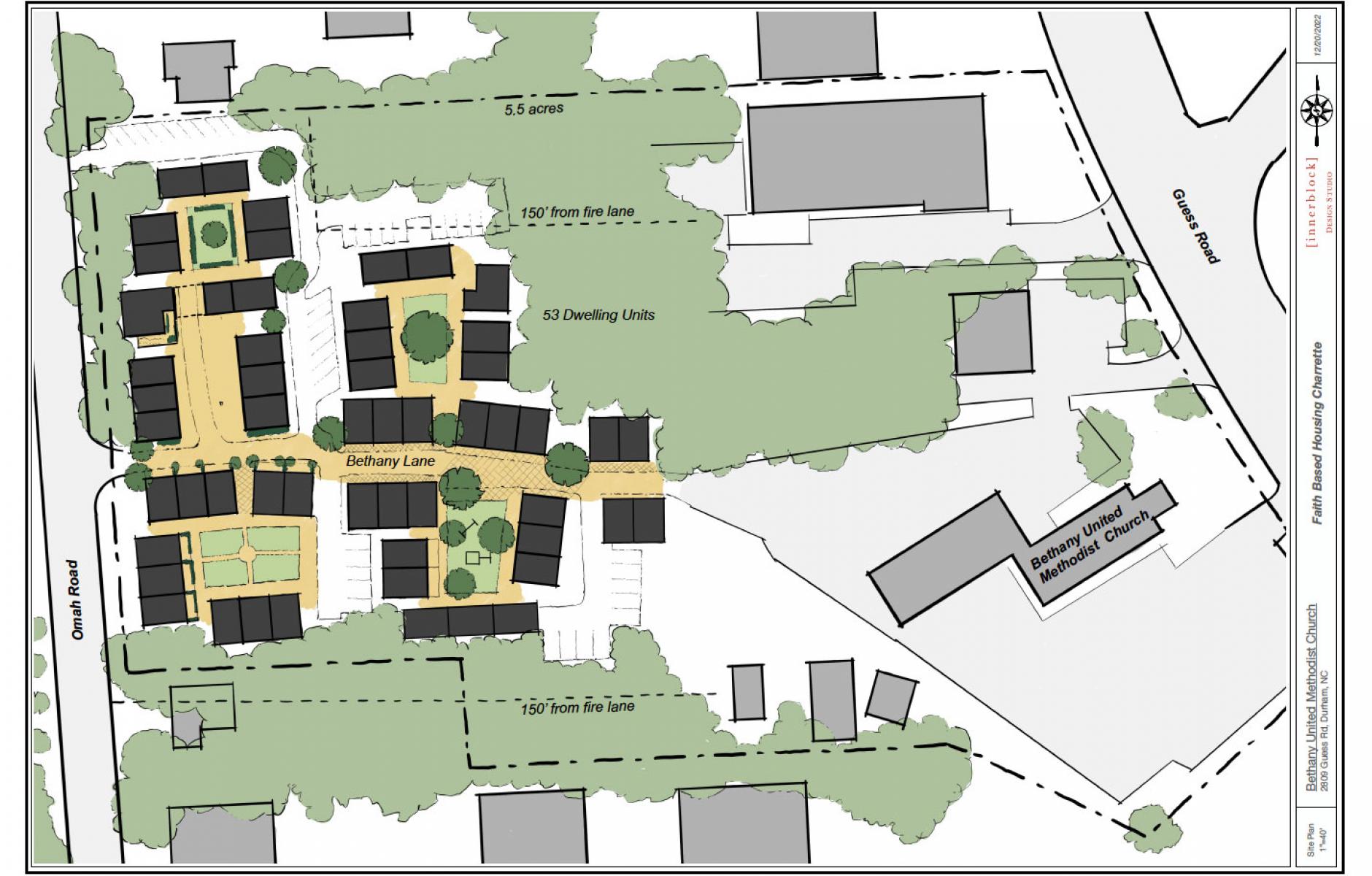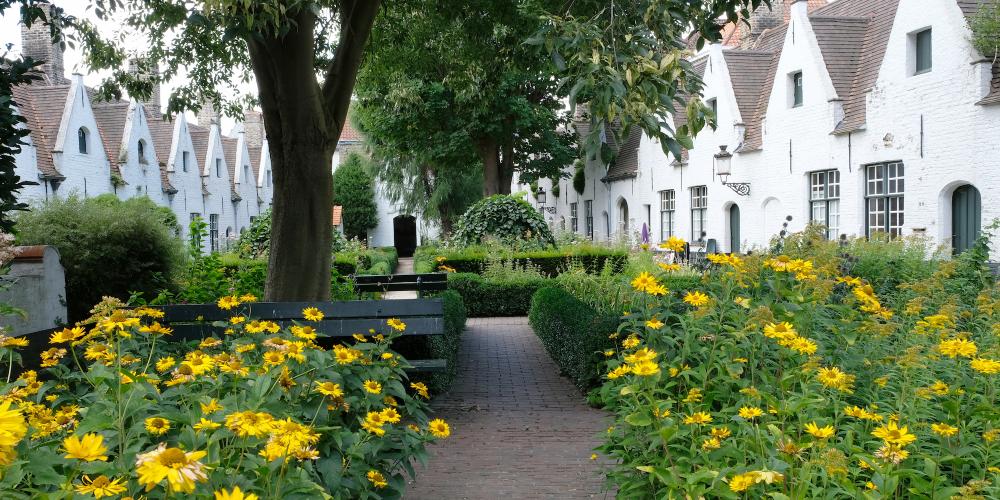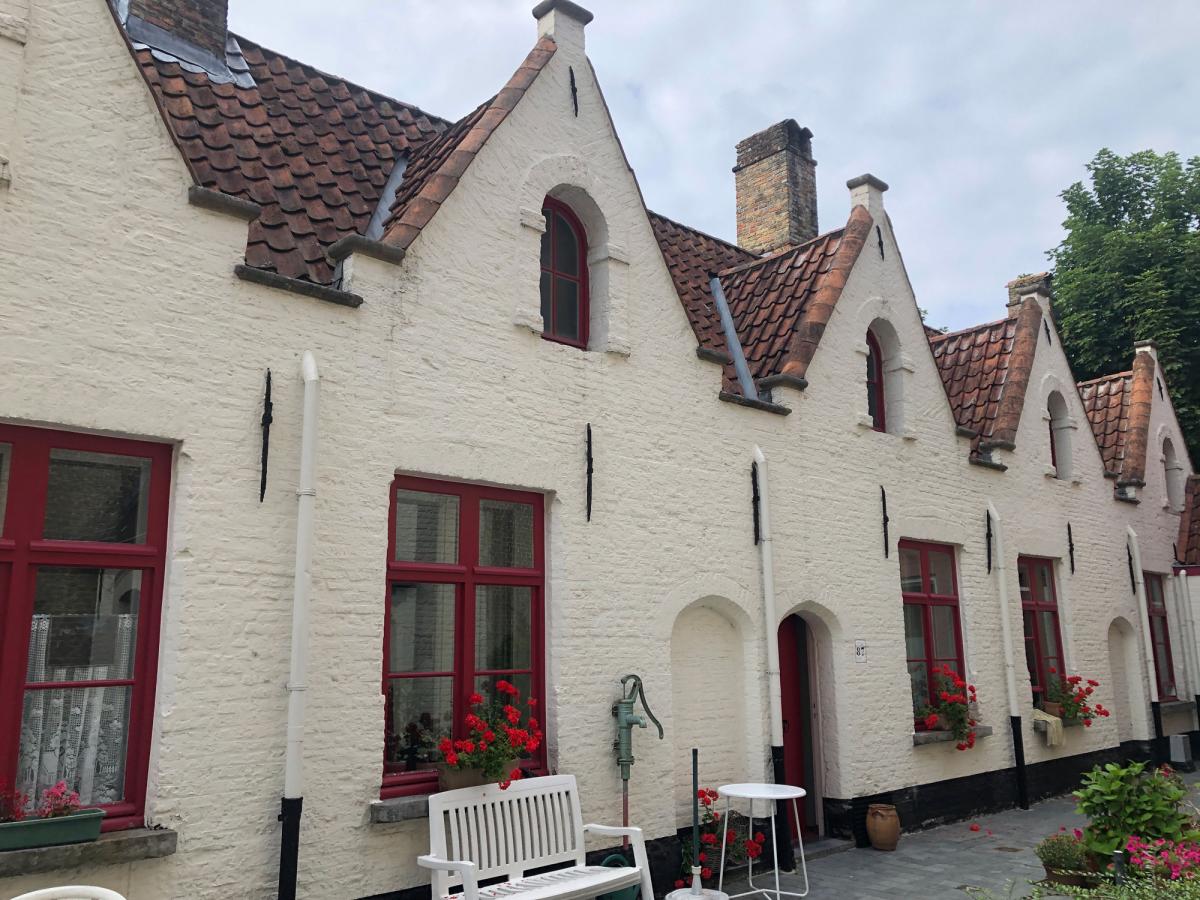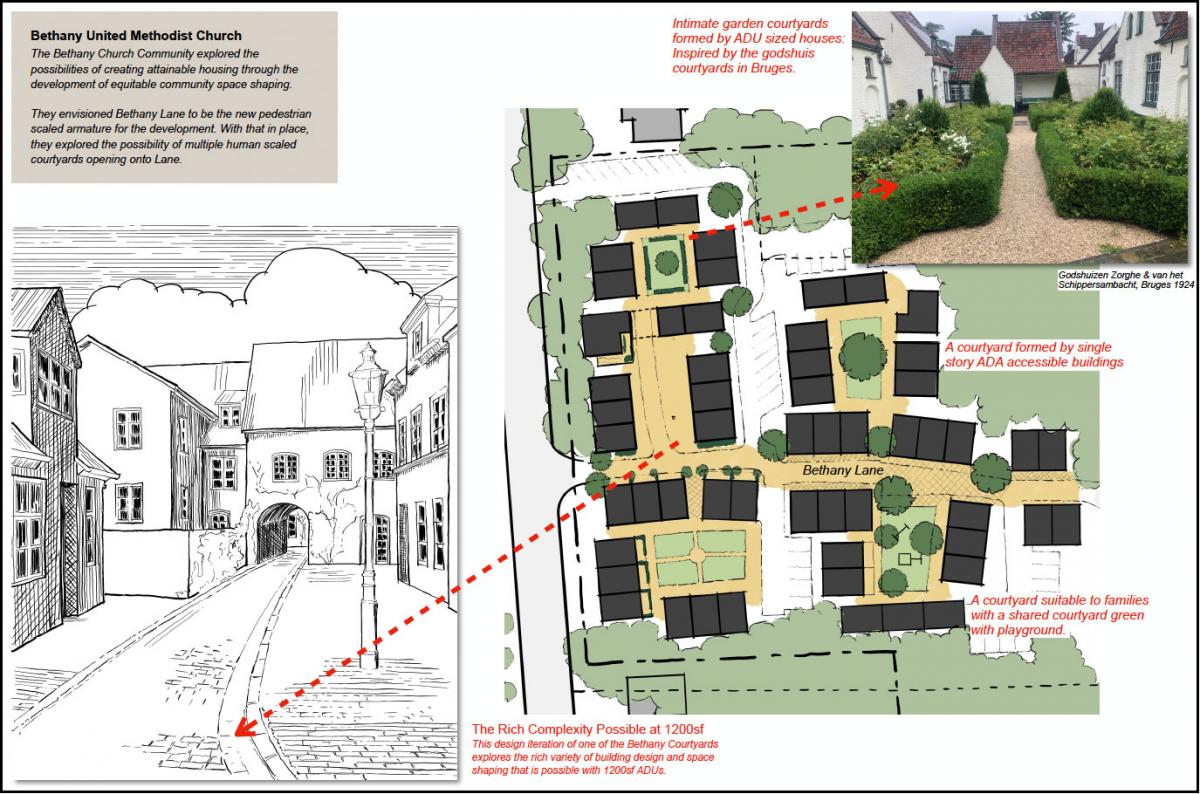
Putting faith in housing solutions
Charitable housing has been part of American religious tradition since its founding. For early American faith communities, these traditions stretched back for centuries.
Today, this sacred mission of providing housing to those in need is facing new challenges. For many, rising rents and home prices have outstripped income. Exclusionary zoning and conventional development practices have failed to meet the growing need for attainable, smaller housing options. Changing lifestyles and family demographics no longer pre-suppose children caring for aging parents, while at the same time lifespans have been growing with many elders far outliving retirement age.
History of housing the needy
In Christian antiquity, church leaders were tasked by Papal authority to provide hospice for travelers and those in need. Along with the monasteries and church leaders, wealthy benefactors or ruling families also built and endowed charitable housing to care for the poor.
With the rise of the merchant class of Western Europe many centuries ago, philanthropists in Belgium created the godshuis (translated from Flemish as ‘God’s-house’), an innerblock courtyard type of small homes for the elderly. Some of them remain in use today.

In 1613, Johanna de Muelenaere founded the godshuis that is now known as De Muelenaere in response to a “housing crisis.” Twenty-four small houses and a chapel intended for elderly women in need were built around a shared garden courtyard. Until the takeover of Bruges by Napoleon, these houses were cared for and managed by the Muelenaere family. Today it is managed by the city, and it still serves the elderly in need. The small brick houses block out any noise from the street, and the courtyard offers an almost startling sense of peace—though it is just a few steps from the the bustle of city life.
Muelenaere’s legacy is built simply of brick, but with the integrity to last for centuries. De Muelenaere, like the other godshuizen of Bruges, limited the number of living spaces to what could be endowed. Placing the homes within the urban block allowed pedestrian access to daily needs. Today, a bakery, a grocery, many restaurants and a pharmacy are all within a few steps, extending the autonomy of the elderly.
To reach the courtyard, one must walk through the arched opening from the street. The space feels semi-private and public at the same time. The courtyard provides a transitional space of security, peace, and natural beauty. Each home has its own front door, which tangibly reflects the significance of the individual inhabitant who is free to retire into their own domain.

Meanwhile, early American colonies followed the English tradition of providing the almshouse or poorhouse. Unlike the Belgian example, these institutions demanded work from those housed and were usually seen as a refuge of last resort by those staying there. These institutions were also designed to house a much wider demographic, which included those with physical and mental illness, single mothers, orphans, poor and elderly. Over time, these institutions focused more on medical care than housing, and in time, many became medical hospitals. Meanwhile, churches in America have found other ways of providing shelter for those in need.
The crisis of home
Across America, faith communities face a “housing crisis”—an issue of both “housing attainability,” and also changes in how living spaces are built and financed. Many church communities, especially in the South, own large lots in quickly urbanizing areas.
Over the last year I have been in touch with one in Durham, North Carolina, that owns 10 acres on which their church sits. The community has been considering developing attainable housing for lower income households, with a special focus on small accessible units for the rapidly growing elderly population.
Church leaders discovered that the zoning code that governed the use of their land does not allow for residential homes to be built. Churches across the country are facing the same issue. Zoning codes often make the development of small, attainable housing on church land illegal.
It wasn’t the first time this community had come together to provide housing. In the early 1990s, they had raised considerable funds to help construct attainable housing in Durham. But the building is showing its age. The non-profit managers of the four-story wood framed structure have been told that the building would cost more to renovate than it is worth—and that demolishing the structure and starting over is probably the best path forward.
Community leaders talked about the lack of housing options for the elderly in their community, and the struggle to retain and build their congregation, in part due to the rising cost of construction. This elderly housing issue is not unique to Durham, as the US population ages. Household makeup is also changing. Today, single person households outnumber nuclear family households (48 percent of American adults are single and 28 percent of American households are single adults living alone). Since 1990, rents and home prices have risen precipitously, but the median household income has stagnated, according to AARP.
The church in Durham is not alone in wanting to address the housing needs of their community. Public Housing, Low Income Housing Tax Credits, and subsidized affordable housing programs from the local to federal level are all attempting to address this need. The Church, with its recent experience in affordable housing, brings a unique perspective. They own land in an appreciating urban setting that is not taxed. They are also aware of the importance of location and quality of life. Dr. Bill Thomas, one of the nation’s foremost thought leaders on aging and care, says that “our current medical industry over-clinicalizes aging”—and that “the environment we call home, not medication, should be the number one concern for those providing elderly care.” Church leaders stress that an “affordable unit” may provide shelter, but does not necessarily provide a home.

A vision for the future
Though we live in the wealthiest, most prosperous, technologically advanced moment in world history, our housing needs in America today are urgent and our cultural understanding of home is eroding. This is in part because for the last 75 years, affordable housing projects have largely not been worth maintaining for much longer than 45 or 50 years. Like the Durham Church’s 1990s contribution to attainable housing—these projects focused on the immediate need at the expense of the long term. Modern development pro-forma don’t value multi-generational permanence, and their value proposition is “number of units to cost of construction in a 30 to 45 year timeframe.” But individuals, families, and the collective memory of generations call for much longer timeframes.
The Church in Durham stands at a crossroads. Their faith-based mission and multi-generational perspective give them a unique vantage point to engage with the current crisis. They own land in an urbanizing area, inherited from the contributions of previous generations of church members. How should they move forward?
In December of 2022, Southern Urbanism hosted a Faith Based Housing Charrette, and worked with four faith communities to explore possible attainable housing developments on their land. The impetus for the charrette was a proposed amendment to Durham’s Zoning Code. Durham’s Accessory Dwelling Unit (ADU) text amendment—allowing Church Communities to build an unlimited number of 1,200 square foot ADUs on their land—would empower church communities to once again pursue the sacred mission of providing homes to those in need.
The godshuis offers a vision of what that could look like. The modern godshuis could be much like the old: made from simply-stacked brick and a sturdy roof that could last for centuries. A godshuis is a gift to the city and community. It is recognized as a home for generations of families and the community as a whole.
The historic godshuis homes are typically single story, party wall brick homes of about 600 square feet—a perfect fit for the ADU ordinance. The interiors of the homes could be designed and built at the highest quality of elderly care today. They would be grouped in community scaled numbers of around 4 to 30 homes, and each home would have a front door onto a shared courtyard garden. Built simply and durably, the godshuis homes would become part of the fabric of the town or city. Like the godshuizen of Bruges, they would be worth inheriting and could continue the mission of elderly housing for centuries to come.
Model of faith-based housing
If Durham’s proposed ADU amendment passes, a new model of faith-based housing could emerge in America. A model composed of durable, beautiful housing built for many generations to come. The model that reflects the individuality of the person, with a front door opening onto a common garden courtyard. It addresses the housing needs of its community through the building of beautiful, small, homes. A ‘home’ that reflects both our human need for shelter, but also reflects and allows us to encounter our “our own nature as spiritual beings.”
This piece is an edited version of an article that was originally published in the Spring/Summer issue of Southern Urbanism Quarterly
Editor's note: This article addresses CNU’s Strategic Plan goals of working to change codes and regulations blocking walkable urbanism, and to grow the supply of neighborhoods that are both walkable and affordable.




